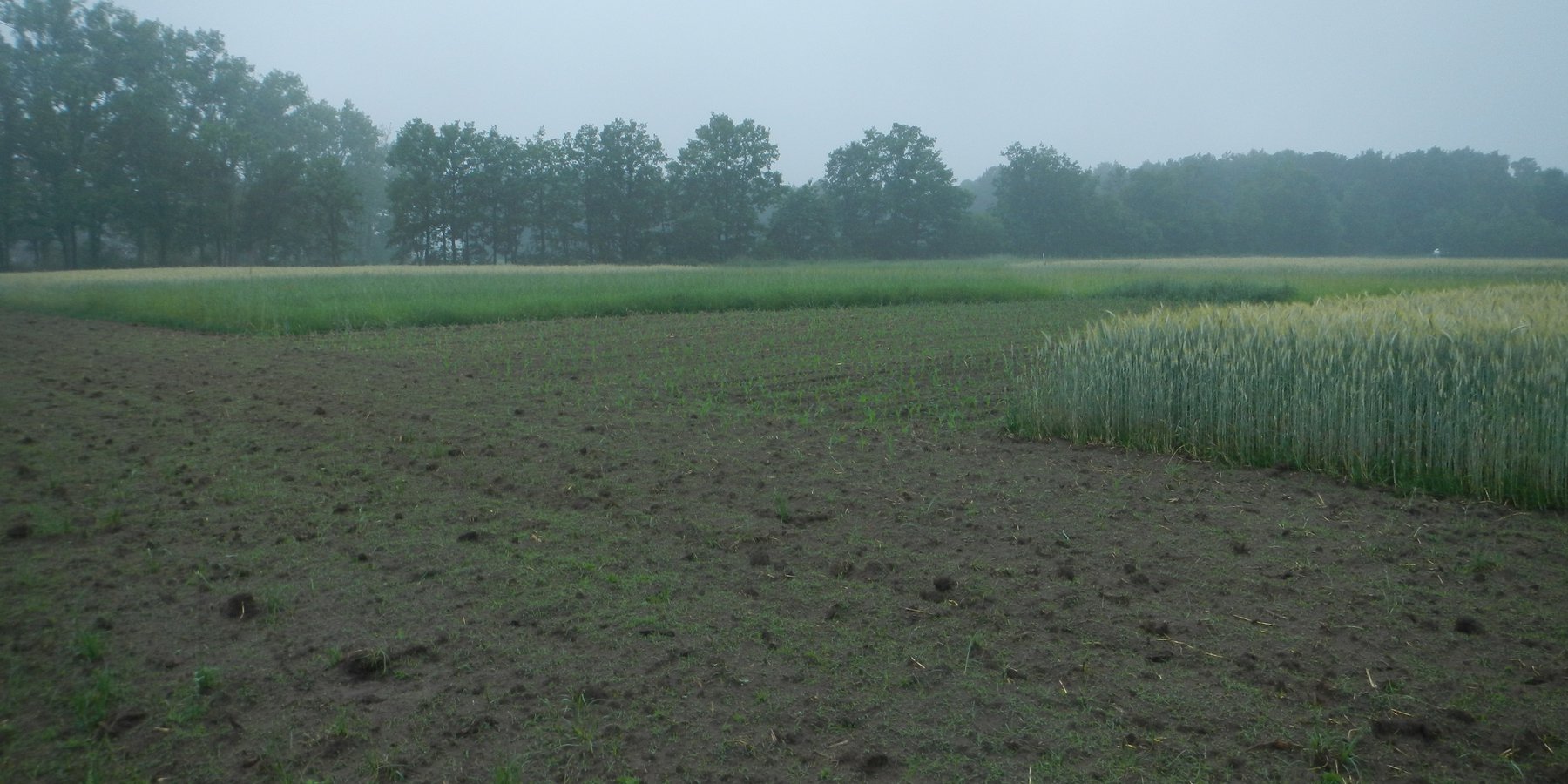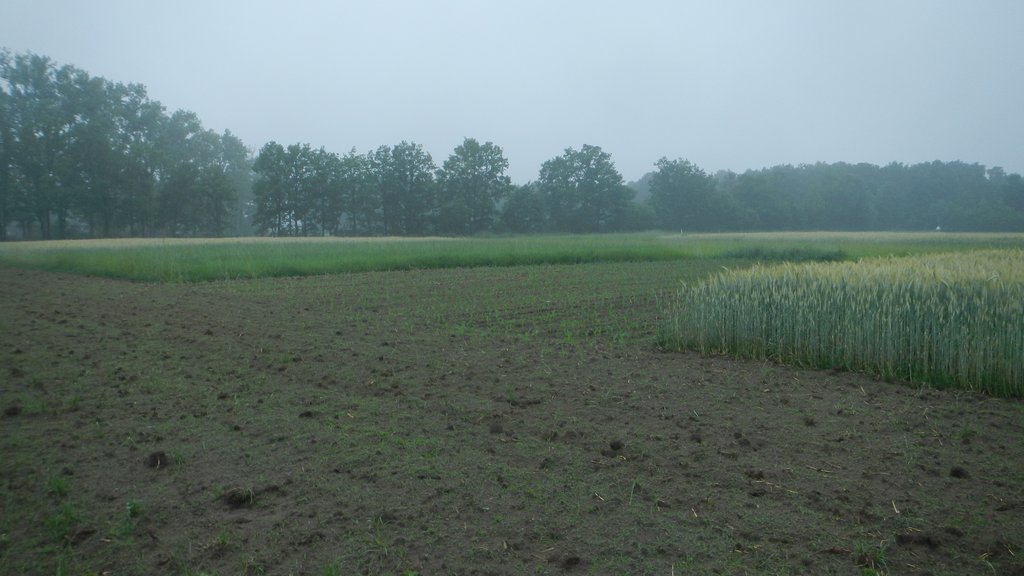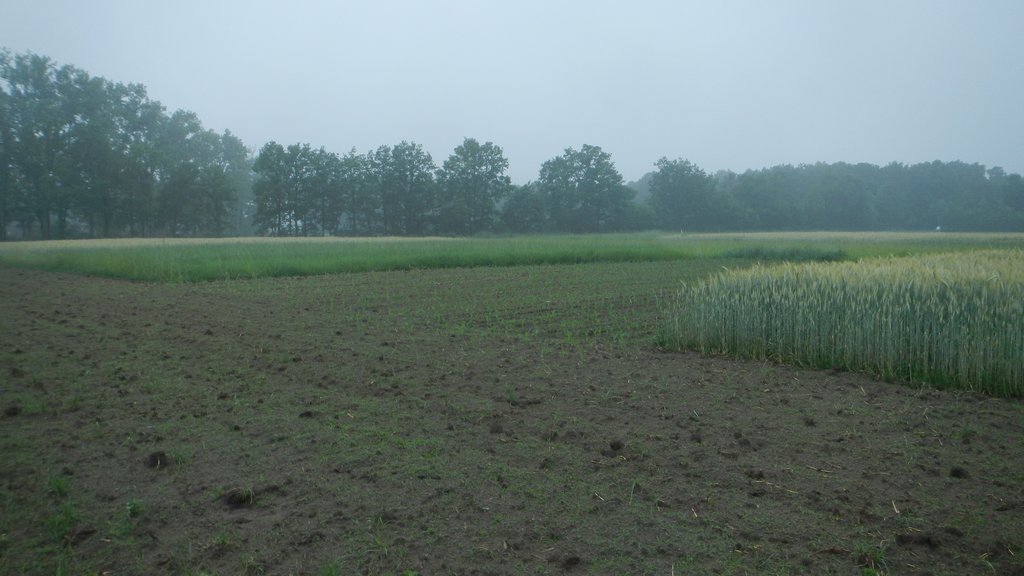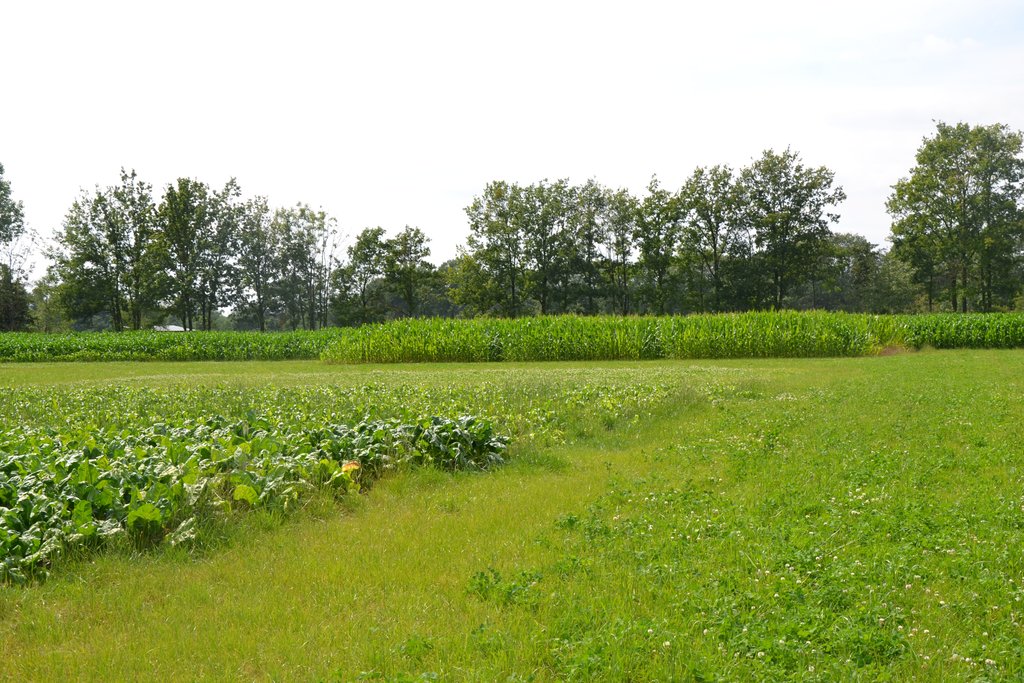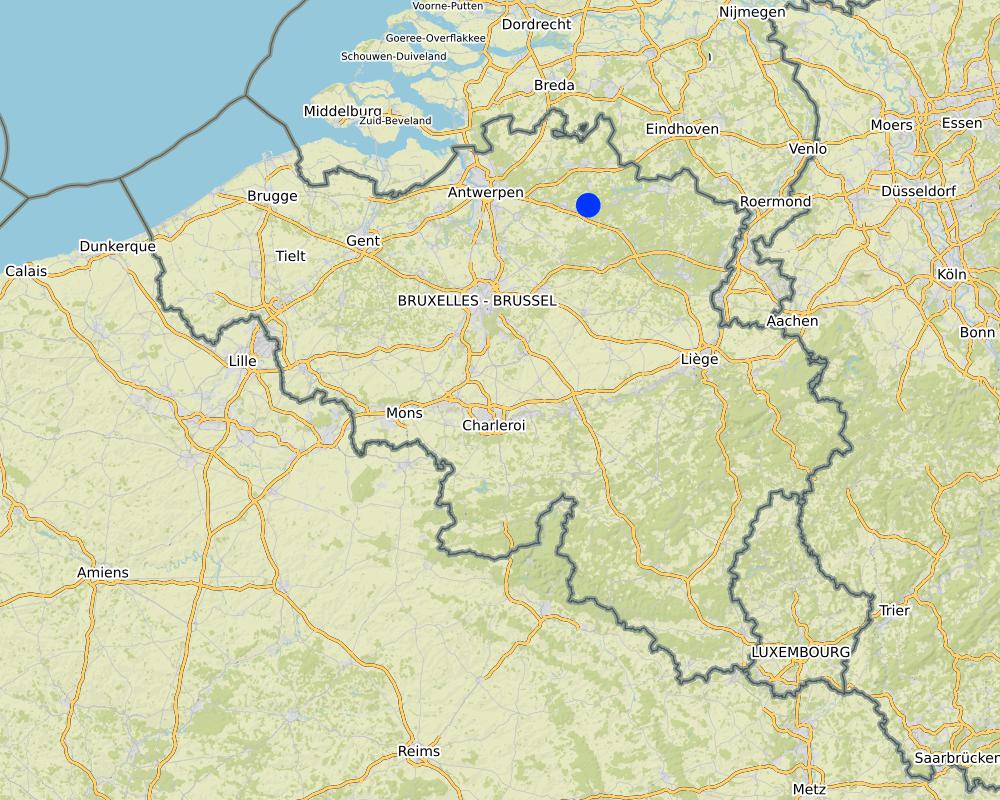Crop rotation [比利时]
- 创建:
- 更新:
- 编制者: Sabine Reinsch
- 编辑者: David Robinson, Lindsay Maskell
- 审查者: Renate Fleiner, Rima Mekdaschi Studer
vruchtwisseling / teeltrotatie
technologies_5578 - 比利时
查看章节
全部展开 全部收起1. 一般信息
1.2 参与该技术评估和文件编制的资源人员和机构的联系方式
关键资源人
SLM专业人员:
Van de Ven Gert
Hooibeekhoeve
比利时
有助于对技术进行记录/评估的项目名称(如相关)
European Interreg project FABulous Farmers有助于对技术进行记录/评估的机构名称(如相关)
UK Centre for Ecology & Hydrology (CEH) - 英国1.3 关于使用通过WOCAT记录的数据的条件
编制者和关键资源人员接受有关使用通过WOCAT记录数据的条件。:
是
1.4 所述技术的可持续性声明
这里所描述的技术在土地退化方面是否存在问题,导致无法被认为是一种可持续的土地管理技术?:
否
2. SLM技术的说明
2.1 技术简介
技术定义:
The use of crop rotation in dairy farms to provide fodder on a healthy sandy soil
2.2 技术的详细说明
说明:
Belgium has favourable conditions for agriculture: moderate temperatures, evenly distributed precipitation, and a long growing season. Today, ~28 % of the country is under cultivation. Farming engages only 2 % of the total labour force, but it produces sufficient quantities to make Belgium a net food exporter. About 2/3 of the farms are intensively cultivated units of less than 10 hectares (25 acres).
The Functional Agro-Biodiversity (FAB) measure on avoiding monocultures and implementing crop rotations was established on a trial field in Belgium, Geel. The region is characterised by sandy soil and the main crop is maize, mostly in monoculture. Main reasons to stick in the monoculture of maize are the lack of knowledge of the alternatives, specifically on feed value of the crops and storage of the harvested product.
In this trial field different crops are placed in small fields (18 x 25 m) next to each other. The crops are always chosen to be part of the fodder for the dairy cattle. The different root types ensure a better soil structure. The diversity in plants make the field less susceptible for diseases and weeds and give a better uptake of the nutrients that are available in the soil. After one year, we already saw a 50% reduction in weeds compared to the monoculture maize.
The soil is less degraded and even soil carbon sequestration is possible. The latter is not only beneficial for climate regulation but also provides a spongy soil which can capture the water more easily, but also stores the water and makes it available to plants in drier periods. This makes the land more resilient to extreme weather conditions. The difference in sowing time and harvesting time give a higher range in choice for the type of cover crops and give less chance for weeds to develop in the same way year after year. In the reference year 2017 (maize in all the fields), we already saw an additional yield of 10% where crop rotation had been implemented.
The compilation of this SLM is a part of the European Interreg project FABulous Farmers which aims to reduce the reliance on external inputs by encouraging the use of methods and interventions that increase the farm’s Functional AgroBiodiversity (FAB). Visit www.fabulousfarmers.eu and www.nweurope.eu/Fabulous-Farmers for more information.
2.3 技术照片
2.5 已应用该技术的、本评估所涵盖的国家/地区/地点
国家:
比利时
区域/州/省:
Antwerpen
有关地点的进一步说明:
Geel
具体说明该技术的分布:
- 适用于特定场所/集中在较小区域
技术现场是否位于永久保护区?:
否
注释:
Latitude 51.225145
Longitude 5.025308
Map
×2.6 实施日期
注明实施年份:
2016
2.7 技术介绍
详细说明该技术是如何引入的:
- 在实验/研究期间
3. SLM技术的分类
3.1 该技术的主要目的
- 改良生产
- 减少、预防、恢复土地退化
- 适应气候变化/极端天气及其影响
3.2 应用该技术的当前土地利用类型
同一土地单元内混合使用的土地::
否

农田
- 一年一作
年作 - 具体指明作物:
- 谷类 - 大麦
- 谷物类 - 玉米
- 谷类 - 高粱
- 谷类 - 小麦(春季)
- 饲料作物 - 三叶草
每年的生长季节数:
- 1
采用间作制度了吗?:
否
采用轮作制度了吗?:
是
如果是,请具体说明:
5 experimental fields:
Field 1: 2016: maize + cover crop, 2017: maize + cover crop, 2018: maize + cover crop, 2019: maize + cover crop
Field 2: 2016: grass clover, 2017: maize + grass, 2018: grass clover, 2019: grass clover
Field 3: 2016: spring barley + cover crop, 2017: maize + wheat (saw), 2018: wheat + grass, 2019: grass clover
Field 4: 2016: spring barley + grass, 2017: 1 cut grass + maize + wheat (saw), 2018: wheat + grass, 2019: 1 cut grass + sorghum
Field 5: 2016: fodder beet, 2017: maize + wheat (saw), 2018: wheat + cover crops, 2019: fodder beet
Plan for all fields is to plant maize in 2020.
3.3 由于技术的实施,土地使用是否发生了变化?
由于技术的实施,土地使用是否发生了变化?:
- 否(继续问题3.4)
同一土地单元内混合使用的土地::
否
3.4 供水
该技术所应用土地的供水:
- 雨养
3.5 该技术所属的SLM组
- 轮作制度(轮作、休耕、轮垦)
3.6 包含该技术的可持续土地管理措施

农艺措施
- A1:植被和土壤覆盖层
3.7 该技术强调的主要土地退化类型

化学性土壤退化
- Cn:肥力下降和有机质含量下降(非侵蚀所致)
3.8 防止、减少或恢复土地退化
具体数量名该技术与土地退化有关的目标:
- 防止土地退化
- 减少土地退化
4. 技术规范、实施活动、投入和成本
4.1 该技术的技术图纸
技术规范(与技术图纸相关):
The crop rotation field trial is set-up in two replicates. 5 fields per replicate are planted with a mixture of crops (bottom table). The crop rotation in 2019 is illustrated exemplary. Previous crop rotations on each field (field numbers 1 to 5) are detailed in the table. For 2020, a maize monoculture is planned to assess the impact of crop rotation trials on yields and ecosystem services.
作者:
Katrien Geudens
日期:
01/09/2019
4.2 有关投入和成本计算的一般信息
具体说明成本和投入是如何计算的:
- 每个技术区域
其它/国家货币(具体说明):
€
如相关,注明美元与当地货币的汇率(例如1美元=79.9巴西雷亚尔):1美元=:
0.91
4.4 技术建立所需要的费用和投入
| 对投入进行具体说明 | 单位 | 数量 | 单位成本 | 每项投入的总成本 | 土地使用者承担的成本% | |
|---|---|---|---|---|---|---|
| 其它 | Estimate of all-inclusive costs for a 4 yr rotation (workforce/equipment/material) | ha/4yrs | 1.0 | 2000.0 | 2000.0 | 100.0 |
| 技术建立所需总成本 | 2000.0 | |||||
| 技术建立总成本,美元 | 2197.8 | |||||
如果土地使用者负担的费用少于100%,请注明由谁负担其余费用:
NA
注释:
Here you can find an overview of costs for a range of crop rotations. To compare them in a proper way, we also added the price in combination with the milk yield (€/1000 kVEMeq) and this split up for sand and sandy loam.
Crop rotation: maize - leguminous crop - fodder beet - triticale: 1926 €/ha; Sandy soil: 120 €/1000 kVEMeg; Sandy Loam: 108 €/1000 kVEMeq
Crop rotation: maize - winter triticale - fodder beet: 2066 €/ha, Sandy soil: 127 €/1000 kVEMeg; Sandy Loam: 114 €/1000 kVEMeg
Crop rotation: grass clover - fodder beet - maize - winter triticale: 2090€/ha, Sandy soil: 148€/1000 kVEMeg; Sandy Loam: 133 €/1000 kVEMeg
Crop rotation: grass clover - potato - maize winter triticale: 1980 €/ha, Sandy soil: 140€/1000 kVEMeg; Sandy Loam: 126€/1000 kVEMeg
Crop rotation: grass clover - maize - winter triticale: 1944 €/ha, Sandy soil: 148 €/1000 kVEMeg; Sandy Loam: 133 €/1000 kVEMeg
Monoculture maize + grass cover crop + grass clover meadow (no derogation): 2080 €/ha, Sandy soil: 156 €/1000 kVEMeg; Sandy Loam: 140 €/1000 kVEMeg
Monoculture maize + grass clover meadow, 1 cut (derogation): 2304 €/ha, Sandy soil: 167€/1000 kVEMeg; Sandy Loam: 150 €/1000 kVEMeg
Monoculture maize + grass clover meadow (no derogation): 2048 €/ha, Sandy soil: 160 €/1000 kVEMeg; Sandy Loam: 144 €/1000 kVEMeg
(Source: http://www.lcvvzw.be/publicaties/ A2018_6 Scenariofiches vruchtwisseling)
5. 自然和人文环境
5.1 气候
年降雨量
- < 250毫米
- 251-500毫米
- 501-750毫米
- 751-1,000毫米
- 1,001-1,500毫米
- 1,501-2,000毫米
- 2,001-3,000毫米
- 3,001-4,000毫米
- > 4,000毫米
农业气候带
- 半湿润
5.2 地形
平均坡度:
- 水平(0-2%)
- 缓降(3-5%)
- 平缓(6-10%)
- 滚坡(11-15%)
- 崎岖(16-30%)
- 陡峭(31-60%)
- 非常陡峭(>60%)
地形:
- 高原/平原
- 山脊
- 山坡
- 山地斜坡
- 麓坡
- 谷底
垂直分布带:
- 0-100 m a.s.l.
- 101-500 m a.s.l.
- 501-1,000 m a.s.l.
- 1,001-1,500 m a.s.l.
- 1,501-2,000 m a.s.l.
- 2,001-2,500 m a.s.l.
- 2,501-3,000 m a.s.l.
- 3,001-4,000 m a.s.l.
- > 4,000 m a.s.l.
说明该技术是否专门应用于:
- 不相关
5.3 土壤
平均土层深度:
- 非常浅(0-20厘米)
- 浅(21-50厘米)
- 中等深度(51-80厘米)
- 深(81-120厘米)
- 非常深(> 120厘米)
土壤质地(表土):
- 粗粒/轻(砂质)
土壤质地(地表以下> 20厘米):
- 粗粒/轻(砂质)
表土有机质:
- 中(1-3%)
如有可能,附上完整的土壤描述或具体说明可用的信息,例如土壤类型、土壤酸碱度、阳离子交换能力、氮、盐度等。:
From 50 cm the soil is white sand.
5.4 水资源可用性和质量
地下水位表:
< 5米
地表水的可用性:
好
水质(未处理):
不良饮用水(需要处理)
水质请参考::
地下水和地表水
水的盐度有问题吗?:
否
该区域正在发生洪水吗?:
否
5.5 生物多样性
物种多样性:
- 中等
栖息地多样性:
- 高
5.6 应用该技术的土地使用者的特征
定栖或游牧:
- 定栖的
生产系统的市场定位:
- 生计(自给)
相对财富水平:
- 平均水平
个人或集体:
- 员工(公司、政府)
机械化水平:
- 机械化/电动
性别:
- 男人
土地使用者的年龄:
- 中年人
说明土地使用者的其他有关特征:
Market orientation: subsistence: the fodder crops are for own use, the milk is sold.
5.7 应用该技术的土地使用者使用的平均土地面积
- < 0.5 公顷
- 0.5-1 公顷
- 1-2 公顷
- 2-5公顷
- 5-15公顷
- 15-50公顷
- 50-100公顷
- 100-500公顷
- 500-1,000公顷
- 1,000-10,000公顷
- > 10,000公顷
这被认为是小规模、中规模还是大规模的(参照当地实际情况)?:
- 中等规模的
5.8 土地所有权、土地使用权和水使用权
土地所有权:
- 州
土地使用权:
- 个人
- No access to water on the field (normally not necessary).
土地使用权是否基于传统的法律制度?:
否
5.9 进入服务和基础设施的通道
健康:
- 贫瘠
- 适度的
- 好
教育:
- 贫瘠
- 适度的
- 好
技术援助:
- 贫瘠
- 适度的
- 好
就业(例如非农):
- 贫瘠
- 适度的
- 好
市场:
- 贫瘠
- 适度的
- 好
能源:
- 贫瘠
- 适度的
- 好
道路和交通:
- 贫瘠
- 适度的
- 好
饮用水和卫生设施:
- 贫瘠
- 适度的
- 好
金融服务:
- 贫瘠
- 适度的
- 好
6. 影响和结论性说明
6.1 该技术的现场影响
社会经济效应
生产
作物生产
作物质量
饲料生产
饲料质量
产品多样性
土地管理
收入和成本
工作量
社会文化影响
食品安全/自给自足
生态影响
土壤
土壤水分
土壤覆盖层
土壤压实
养分循环/补给
土壤有机物/地下C
生物多样性:植被、动物
植被覆盖
植物多样性
有益物种
栖息地多样性
害虫/疾病控制
注释/具体说明:
The crops are less susceptible to pests. The damage caused (loss of yield) is less than the cost of protection.
减少气候和灾害风险
干旱影响
6.2 该技术的场外影响已经显现
缓冲/过滤能力
6.3 技术对渐变气候以及与气候相关的极端情况/灾害的暴露和敏感性(土地使用者认为的极端情况/灾害)
渐变气候
渐变气候
| 季节 | 增加或减少 | 该技术是如何应对的? | |
|---|---|---|---|
| 季雨量 | 夏季 | 增加 | 好 |
6.4 成本效益分析
技术收益与技术建立成本相比如何(从土地使用者的角度看)?
短期回报:
轻度消极
长期回报:
积极
技术收益与技术维护成本/经常性成本相比如何(从土地使用者的角度看)?
短期回报:
轻度消极
长期回报:
积极
6.5 技术采用
- 1-10%
在所有采用这项技术的人当中,有多少人是自发的,即未获得任何物质奖励/付款?:
- 91-100%
6.6 适应
最近是否对该技术进行了修改以适应不断变化的条件?:
否
6.7 该技术的优点/长处/机会
| 土地使用者眼中的长处/优势/机会 |
|---|
| Higher resilience to climate change |
| Higher resilience to plagues and diseases |
| Increased soil carbon stock |
| Increased yields and income |
| 编制者或其他关键资源人员认为的长处/优势/机会 |
|---|
| Increased soil carbon stock |
| Increased food security |
6.8 技术的弱点/缺点/风险及其克服方法
| 土地使用者认为的弱点/缺点/风险 | 如何克服它们? |
|---|---|
| Feed value of the "new" crop | Analysis of the crops in standardised tables |
| More cultivation training/exercise necessary | Getting better training/knowledge by joining demonstrations or networks, and use available literature |
| Investment costs (other than machinery) |
| 编制者或其他关键资源人员认为的弱点/缺点/风险 | 如何克服它们? |
|---|---|
| More planning time needed for the different crops | Learn from previous years and other farmers experience |
7. 参考和链接
7.1 信息的方法/来源
- 与土地使用者的访谈
7.3 链接到网络上的相关信息
标题/说明:
EEN BETERE BODEMVRUCHTBAARHEID BIJ MAÏS DOOR VRUCHTWISSELING
URL:
http://www.lcvvzw.be/wp-content/uploads/2019/07/A2016_5Bodemvruchtbaarheidmais.pdf
标题/说明:
Vruchtwisseling: perspectieven op korte én lange termijn
URL:
https://www.landbouwleven.be/2660/article/2018-03-26/vruchtwisseling-perspectieven-op-korte-en-lange-termijn
标题/说明:
Monocultuur kuilmaïs (geen derogatie)
URL:
http://www.lcvvzw.be/wp-content/uploads/2018/05/A2018_3_Vruchtwisselingsfiches.pdf
链接和模块
全部展开 全部收起链接
无链接
模块
无模块


